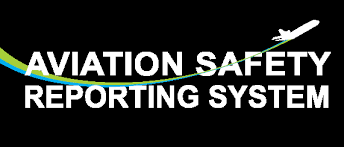Hey, you! My fellow reader. Do you know what aviation safety means? Every field has its risk factors. Managing these risk factors during aviation is called aviation safety. Do these factors needs to be reported? The answer is a big yes as accidents in the air can be disastrous. They need to be prevented and reported. What is an aviation safety reporting system? Come let’s find out.
What is Aviation Safety Reporting System?
“The Aviation Safety Reporting System, or ASRS, is the US Federal Aviation Administration’s (FAA) voluntary confidential reporting system that allows pilots and other aviation professionals to confidentially report near misses or close call events in the interest of improving aviation safety. “
The collection, analysis, and response of the problems addressed by pilots to voluntarily submitted aviation safety incident reports are done by the ASRS. It was originally designed by NASA.


This type of report and analysis helps in bringing down the likelihood of aviation incidents. NASA extended the limited immunity period to individual aviation workers. They need to be reporting safety events that do not result in an accident. This is defined by the FAA. Many incidents have been reported and taken note of by potential reporters. The success of the ASRS has modeled other systems to adapt it such as railways, medical appliances, firefighters, and offshore petroleum production.
The Reporting process
The confidentiality and immunity policy is believed to be the notable features of ASRS. The reporter may not submit personal information and reveal identity. Any questions and queries are confirmed through call back and the reporters are requested further information. Once the necessary information is received the identity is hashed back and assigned with a report number. The relevant parties are informed if NASA feels that the problem needs to be addressed on a big scale. The fields such as airlines, air traffic controllers, manufacturers, and airport authorities are addressed with the issues to coherently improve aviation safety. In addition to this, many researchers and regulators do intricate studies on several topics that are available on ASRS Website.


What do you have to know about the immunity policy?
The FAA’s immunity policy states and encourages the submission of all safety incidents and observations. Interestingly, information that could prevent a major accident, even if a violation occurs is needed to be submitted. The FAA views the record of accidents as a constructive safety attitude to prevent such accidents in the future. If filed a case against an accidental rule violation that did not result in an accident, the reporter can present ASRS as proof. Even though unlimited reports are filed, the immunity policy can be exercised only once in five years.
We learned so much about reports and aviation safety, isn’t it? Hope this article made you wear your thinking caps and reading glasses. The era of inventory of life in the air is still in progress. Hope you enjoyed this fun fact time about Aviation Safety Reporting System. It’s time for more exploration! For more information on aviation and related stuff do check out our blog page at Criss Cross Tamizh. Until then, bye fella explorer!!
